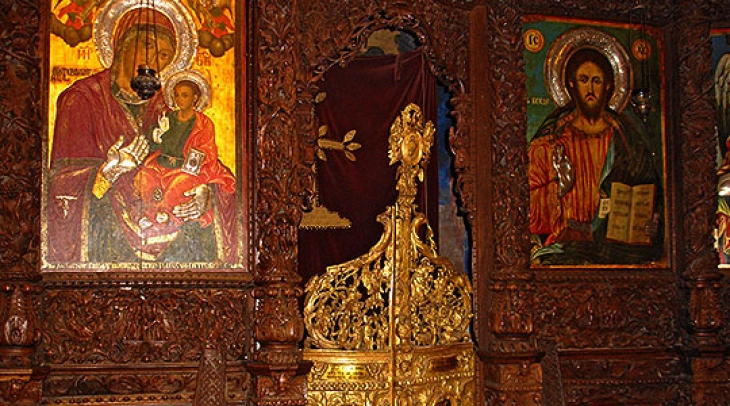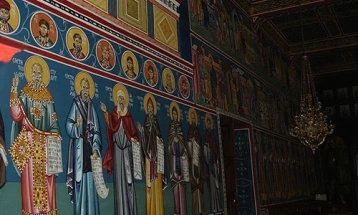Religious calendars
- Born in the Palestinian town of Biblos of Christian parents, little Aquilina was already, at the age of seven, living as a true Christian, and by the age of ten was so filled with divine understanding and the grace of the Holy Spirit that she used to preach Christ with great power and zeal to her girl friends.
- Post By Angel Dimoski
- 08:03, 26 June, 2024

26 June 2024 (MIA)
Macedonian Orthodox Church Calendar
The Holy Martyr Aquilina
Born in the Palestinian town of Biblos of Christian parents, little Aquilina was already, at the age of seven, living as a true Christian, and by the age of ten was so filled with divine understanding and the grace of the Holy Spirit that she used to preach Christ with great power and zeal to her girl friends. When Diocletian’s persecution began, Aquilina was handed over to the imperial governor, Volusianus, who was more like a beast than a man. He ordered that she first be flogged and then that a heated rod be passed through her ears and brain. Until the last moment, the virgin Aquilina freely and clearly confessed Christ the Lord; but when her brains started flowing with her blood from her head, she fell as if dead. Believing her to be indeed dead, the governor ordered that her body be taken outside the city and thrown onto a dungheap for the dogs to eat. But, during the night, an angel of God appeared to her and said: ‘Arise and be healed!’, and the maiden arose and was restored to health, and stood a long time expressing her gratitude and praise to God and begging Him not to deny her a martyr’s death. A voice was heard from heaven: ‘Go; and it shall be to thee as thou desirest’, and Aquilina went into the city. The city gates opened of their own accord for her, and she passed through them
and went to the governor’s palace like a ghost, standing before his bed and showing herself to him. The governor was seized with unspeakable terror when he saw the maiden whom he had thought dead. On the follow-ing day, he ordered the executioner to take Aquilina out and behead her with the sword. Before her execution, she knelt in prayer and surrendered her spirit into God’s hands, leaving her dead body to be beheaded by the executioner. Her relics gave healing to many of the sick. St Aquilina was twelve years old when she suffered for the Lord; she endured her Passion and was crowned with a wreath of martyrdom in the year 293.
Catholic Calendar
Sts. John and Paul
Martyred at Rome on 26 June. The year of their martyrdom is uncertain according to their Acts, it occurred under Julian the Apostate (361-3). In the second half of the fourth century, Byzantius, the Roman senator, and Pammachius, his son, fashioned their house on the Cælian Hill into a Christian basilica. In the fifth century the presbyteri tituli Byzantii (priests of the church of Byzantius) are mentioned in an inscription and among the signatures of the Roman Council of 499. The church was also called the titulus Pammachii after Byzantius’s son, the pious friend of St. Jerome. In the ancient apartments on the ground-floor of the house of Byzantius, which were still retained under the basilica, the tomb of two Roman martyrs, John and Paul, was the object of veneration as early as the fifth century. The Sacramentarium Leonianum already indicates in the preface to the feast of the saints, that they rested within the city walls, while, in one of the early itineraries to the tombs of the Roman martyrs, their grave is assigned to the church on the Cælian. The titulus Byzantii or Pammachii was consequently known at a very early date by the names of the two martyrs (titulus SS. Joannis et Pauli). That the two saints are martyrs of the Roman Church, is historically certain; as to how and when their bodies found a resting-place in the house of Pammachius under the basilica, we only know that it certainly occurred in the fourth century.







